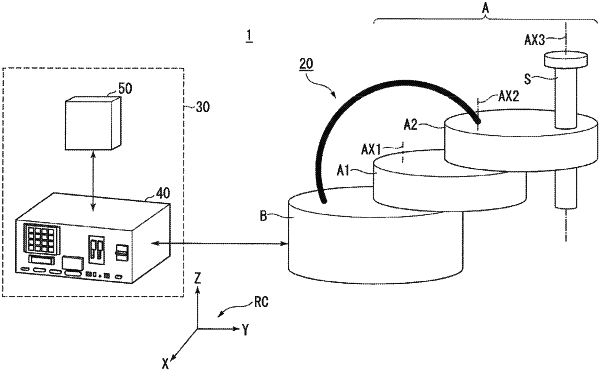| CPC B25J 9/1612 (2013.01) [B25J 9/042 (2013.01); B25J 13/08 (2013.01)] | 17 Claims |

|
1. A control device that controls a robot, the control device comprising:
a display having a screen, the screen being divided into first, second, and third areas next to each other;
a memory configured to store a program and unintended operation information of a plurality of commands in a work sequence for operating the robot, the unintended operation information corresponding to an unintended operation state in which a hand of the robot interferes with another object; and
a processor configured to execute the program so as to:
display the plurality of commands on the first area of the screen;
receive the work sequence via an input device, the received work sequence including at least a first command and a second command of the plurality of commands, the first command being for operating the hand of the robot;
display the received work sequence on the second area of the screen;
display a plurality of properties on the third area of the screen, the plurality of properties corresponding to the first command in the displayed work sequence;
receive selection of a first property of the plurality of properties via the input device and display the received first property on the third area of the screen;
determine whether a first displayed sequence order of the first and second commands on the second area of the screen in consideration of the first property associating with the first command matches the unintended operation state of the unintended operation information;
display attention calling information next to either the first command or the second command on the second area of the screen when the processor determines that the first displayed sequence order of the first and second commands in consideration of the first property matches the unintended operation state of the unintended operation information;
determine whether either the first command or the second command on the second area of the screen is deleted via the input device after the attention calling information is displayed;
be on standby until a new work sequence is received via the input device;
determine whether a second displayed sequence order in the new work sequence matches the unintended operation state of the unintended operation information;
generate a robot operation program when the processor determines that the second displayed sequence order in the new work sequence does not match the unintended operation state of the unintended operation information; and
operate the robot based on the robot operation program.
|